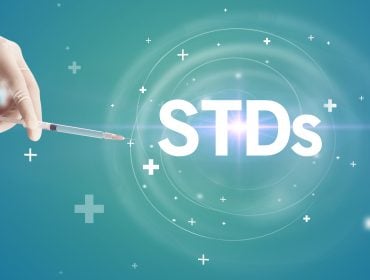Fast Treatment: Expedited Partner Therapy for STDs
Expedited Partner Therapy (EPT) serves as a bridge, connecting infected individuals with treatment that can preempt further spread of certain communicable STDs without direct medical consultation for their partners.
When a healthcare professional administers EPT, they metaphorically extend a hand to unseen individuals, providing prescription medications or treatments to the patient’s partner without personal examination, thus curbing the silent progression of the STD within the community.
Chlamydia and Gonorrhea are treatable.
Unpacking Expedited Partner Therapy (EPT)
Expedited Partner Therapy (EPT) is an innovative public health strategy designed to treat sexual partners of individuals diagnosed with certain sexually transmitted diseases (STDs) without the need for a prior medical evaluation. This approach aims to prevent the spread of STDs by streamlining the treatment process for partners who may be infected but are asymptomatic or otherwise unlikely to seek medical attention on their own.
In the realm of STD management, EPT serves as a pragmatic bridge to overcome gaps in treatment adherence and follow-up. By enabling the index patient, that is, the individual who tested positive for an STD, to deliver medication directly to their partner, EPT circumvents potential barriers such as stigma, lack of access, or unawareness. It is a targeted intervention that, when deployed appropriately, can disrupt the transmission cycle of specific infections, protecting communities at large from the ongoing proliferation of STDs.
EPT Defined: A Primer
Expedited Partner Therapy, a public health tool, facilitates treatment of STDs for partners of diagnosed individuals. The method bypasses traditional pre-treatment evaluations.
Designed as a direct response to STD transmission risks, EPT grants immediate access to medication for sexual partners, optimizing public health outcomes. This proactive tactic reduces infection rates by addressing partner treatment barriers. EPT targets the cycle of STD transmission for a healthier society.
Through EPT, heterosexual couples can effectively combat chlamydia and gonorrhea, with protocols extending under careful consideration to other STDs, ensuring a broader protective impact against infections. It prioritizes health and disrupts disease continuity.
Legal Landscape: Where EPT Stands
In a majority of states, Expedited Partner Therapy is legal, with nuanced regulatory frameworks guiding its application. These legal landscapes reflect the recognition of EPT’s public health value, albeit with marked differences in implementation and accessibility. Some regions have fully embraced EPT, while others remain cautious or have yet to legislate its use.
EPT is not uniformly authorized nationwide.
Several states have specific EPT-related statutes or administrative codes in place. These legal provisions lay the groundwork for how EPT is to be executed within those jurisdictions, delineating responsibilities for healthcare professionals and outlining permissible practices. Regulations continue to evolve at the state level.
Intense debate shapes the contours of EPT legislation. Proponents argue for expansion, citing public health successes, while detractors raise concerns about bypassing traditional medical consultations. By early 2023, notable progress has been made towards broader acceptance and standardization of Expedited Partner Therapy practices across the nation.
STDs Eligible for EPT Treatment
Expedited Partner Therapy (EPT) is an effective public health strategy primarily deployed against chlamydia and gonorrhea, two prevalent bacterial sexually transmitted diseases (STDs). Suitability for EPT hinges on straightforward diagnostic criteria and the availability of single-dose or uncomplicated treatment regimens, which allows partners to be treated without prior medical evaluation.
Additionally, some regions extend EPT to trichomoniasis, another common STD. However, it is imperative to recognize that EPT is not applicable for all STDs, notably those requiring complex treatment protocols or management, such as syphilis and human immunodeficiency virus (HIV).
Chlamydia: EPT’s Role in Containment
Chlamydia stands as a principal target for Expedited Partner Therapy interventions. Its high prevalence, coupled with frequently asymptomatic nature, necessitates innovative containment strategies like EPT.
In the context of public health, EPT emerges as a pivotal tool against the silent spread of chlamydia. By providing treatment to partners without a mandatory medical evaluation, EPT curtails potential chains of transmission effectively and rapidly.
To elucidate, when an individual is diagnosed with chlamydia, health providers can furnish patients with prescriptions or medications for their partners. This preemptive move is paramount in preventing reinfection and controlling the community-wide dissemination of the bacterium.
The simplicity of chlamydia treatment regimens, often a single-dose antibiotic, supports the viability of EPT. Such accessible therapeutics are critical in ensuring adherence and the broader reach of this prophylactic measure across diverse populations.
Ultimately, EPT for chlamydia embodies a pragmatic response to a pervasive public health challenge. Its implementation reflects a commitment to both individual patient care and the collective well-being of the community at large.
Gonorrhea: EPT’s Impact on Transmission
Expedited Partner Therapy (EPT) serves as a formidable instrument in combating the insidious transmission of gonorrhea. By circumventing traditional barriers to treatment, it significantly curtails the spread of this communicable disease.
EPT enables swift intervention in gonorrhea cases. Immediate partner treatment is pivotal in preventing reinfection cycles.
Indeed, when a patient tests positive for gonorrhea, health providers can extend EPT to sexual partners. This bypasses delays (commonly experienced in clinic-based testing and treatment) and accelerates therapeutic response.
By directly furnishing partners with antibiotics, EPT reduces the window of infectivity. It plays a vital role in disrupting the continuation of the disease transmission cycle.
This approach proves particularly efficacious in populations with high transmission rates. EPT complements public health strategies aimed at reducing the overall burden of gonorrhea by breaking the chain of transmission and decreasing reinfection rates.
Therefore, EPT is a key element in reducing gonorrhea’s hold on public health. Prompt partner treatment strategies ensure that control efforts are not undermined by ongoing transmission among untreated partners.
Operational Mechanics of EPT
Expedited Partner Therapy (EPT) functions as a public health measure designed to curb the spread of certain sexually transmitted diseases by treating the sexual partners of infected individuals without the necessity of prior medical evaluation. This strategic intervention allows partners to receive therapy expeditiously, thereby curtailing further transmission of the infection. It is a pragmatic approach that recognizes the challenges inherent in partner notification and aims to simplify the treatment cascade, reducing the burden of disease spread.
When a patient is diagnosed with an STD for which EPT is applicable, healthcare providers are able to dispense or prescribe medication to infected patients and their partner(s), known as “patient-delivered partner therapy.” This does not only facilitate prompt treatment but also minimizes barriers of accessibility and affordability for the partners who might otherwise not seek care. In practice, EPT streamlines the traditional healthcare pathway, ameliorating the potential for disease proliferation by ensuring that infected individuals and their partners receive concurrent treatment, crucial in maintaining public health integrity.
Prescribing EPT: The Healthcare Provider’s Role
Responsibility rests squarely upon healthcare providers when initiating Expedited Partner Therapy (EPT). They must assess the suitability for EPT and ensure that legislative provisions within their jurisdiction permit its application.
The determination of EPT’s applicability is clinical and requires discernment. Providers must consider the potential for allergic reactions in partners.
Furthermore, providers must provide comprehensive guidance on medication administration, stressing adherence to the complete therapy course for efficacy. Providers also bear the duty of educating patients regarding STI transmission, the importance of informing partners, and encouraging abstinence during treatment.
Patients should be provided with literature to hand to their partners, detailing potential side effects and emphasizing the importance of their own clinical evaluation, despite receiving EPT.
Finally, it is the provider’s role to maintain thorough documentation of EPT prescriptions, ensuring legal and medical accountability for both patient and partner outcomes.
Patient and Partner: Navigating EPT Together
By providing medication to the patient’s partner without a traditional face-to-face medical consultation, EPT facilitates timely treatment of sexually transmitted diseases and curtails the spread of infection. Particularly for chlamydia and gonorrhea, this method has shown efficacy in reducing reinfection rates. Therefore, it is considered a practical approach in the continuum of sexual health services.
EPT is not without limitations and considerations, both partners must understand the implications of treatment. Openness and collaboration are critical, as a foundational element of EPT involves mutual trust and proactive participation in the treatment process to achieve optimal health outcomes.
Evaluating EPT Effectiveness
To thoroughly gauge the efficacy of Expedited Partner Therapy (EPT), one must consider the multifaceted aspects of STD management, especially its impact on reinfection rates and antibiotic resistance. EPT has continuously demonstrated effectiveness in preventing the cyclical pattern of infection and reinfection, particularly when it comes to chlamydia and gonorrhea. Nonetheless, it is imperative to monitor trends in resistance, as EPT’s widespread implementation could theoretically influence pathogen resistance patterns.
Factors such as patient adherence, partner notification, and acceptance of medication play a vital role as metrics in assessing the success of EPT. While the practice reduces the burden of disease in affected populations, it is also necessary to evaluate the long-term outcomes related to EPT. In doing so, public health professionals must consider not only individual patient outcomes but also the overarching impact on public health and epidemiological trends of STDs. It is this comprehensive surveillance that ensures the sustained effectiveness and appropriateness of EPT in the broader context of sexual health management.
Success Rates: Evidence in Numbers
Expedited Partner Therapy (EPT) yields commendable success in curbing STD reinfections.
- Chlamydia: Treatment with EPT has resulted in up to a 29% reduction in reinfection rates for the index case’s partners.
- Gonorrhea: Studies suggest partners who received EPT exhibited a 27% lower rate of reinfection compared to those who did not.
- HIV: While EPT is not a direct treatment for HIV, it helps reduce the risk of coinfections that can complicate HIV management.
These numbers underpin EPT’s role in enhancing public health outcomes. Ongoing surveillance ensures EPT retains its effectiveness in the evolving landscape of STD prevention.
Safety and Controversy: Weighing the Pros and Cons
In practice, EPT minimizes barriers to treatment accessibility. The providence of medication or a prescription without a medical consultation simplifies the process for the patient’s sexual partners, thus increasing the likelihood of treatment compliance. Nevertheless, detracting voices argue it bypasses important in-clinic evaluations and diagnoses.
Risks of adverse drug reactions may be underreported. Without direct medical supervision the potential for adverse events following EPT remains an uneasy consideration for healthcare professionals.
Proponents herald EPT as a pragmatic public health intervention. While recognizing the caveat of these challenges, the CDC acknowledges EPT as a valuable tool in specifically targeted STDs. As of the first quarter 2023, numerous states have legislated its use, subject to conditions that aim to mitigate possible negative outcomes.
Medically Reviewed by Erin Zinkhan, MD, BSBE on April 1, 2024
Secure and Confidential
STD testing services
The fastest results possbile - available in 1 to 2 days

Tagged
Categorized As
Author: STD Check Editorial Team
At STDCheck.com, we go to great lengths to ensure quality content. We’re using our own collection of data. It is not bought or made up for “click-bait” purposes. We don’t entice traffic with cheesy graphics or raunchy headlines. Our information is to promote STD testing, educate people, let go of social stigmas, and bring awareness. We also provide a completely confidential atmosphere through private testing. When we produce an article, it is fact-based. We check it with medical advisors that approve it. Our staff consists of doctors and other medical professionals who peer review the content we make available on STDCheck.com. From all over the world, we have sourced the best and the brightest content developers, including medical professionals, marketing engineers, data scientists, content specialists, and media relations.




